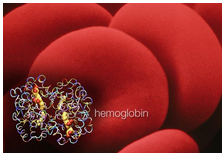Understanding Anemia -- the Basics
What Is Anemia?
Anemia is a condition that develops when your blood lacks enough healthy red blood cells or hemoglobin. Hemoglobin is a main part of red blood cells
and binds oxygen. If you have too few or abnormal red blood cells, or
your hemoglobin is abnormal or low, the cells in your body will not get
enough oxygen. Symptoms of anemia -- like fatigue -- occur because organs aren't getting what they need to function properly.
Anemia
is the most common blood condition in the U.S. It affects about 3.5
million Americans. Women, young children, and people with chronic
diseases are at increased risk of anemia. Important factors to remember
are:
- Certain forms of anemia are hereditary and infants may be affected from the time of birth.
- Women in the childbearing years are particularly susceptible to iron-deficiency anemia because of the blood loss from menstruation and the increased blood supply demands during pregnancy.
- Older adults also may have a greater risk of developing anemia because of poor diet and other medical conditions.
There are many types of anemia. All are very
different in their causes and treatments. Iron-deficiency anemia, the
most common type, is very treatable with diet changes and iron supplements.
Some forms of anemia -- like the mild anemia that develops during
pregnancy -- are even considered normal. However, some types of anemia
may present lifelong health problems.










0 Response to "N0 111. Understanding Anemia -- the Basics"
Posting Komentar